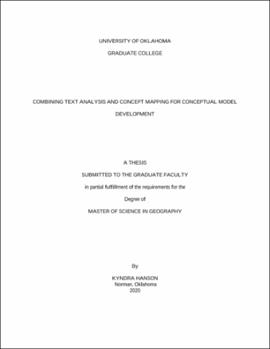| dc.description.abstract | The Rio Grande/Río Bravo River (RGB) stretches through Colorado, New Mexico, Texas and Mexico before it reaches the Gulf of Mexico, spanning a politically, socio-economically, and environmentally diverse region. Management decisions in this highly complex coupled human-natural system (CHANS) may lead to unintended outcomes throughout the basin, upstream and downstream. The interactions between the river, the basin’s landscape, and the people that rely on these land and water resources have not been addressed in a whole-basin and spatially explicit modeling approach, which has left a gap in knowledge regarding plans for managing changes in water availability due to climate change. To address this, collaborators (Drs. Paladino and Friedman) conducted a multitude of in-person interviews with water managers, large agricultural water users, and non-governmental actors charged with water management decisions in the RGB. The resulting interviews provided the underlying information used to explore and analyze the social processes that are behind those decisions. A concept map was developed to be used as a tool to visually document the local knowledge on decision making in the RGB and to support the development of a simulation model of the RGB CHANS. Since the RGB basin is large and environmentally and culturally heterogeneous, I tested an approach to reduce the time needed to analyze the interview data and develop the concept map: an automated text analysis, based on a topic model approach. By implementing a topic model on the interviews, I tested whether a topic model had the potential to reduce the time needed for concept map development and/or if the topic model would be able to support the concept mapping process. In this document, I briefly discuss the concept map and its development process, since they form the basis of this research. Then I introduce text analysis and the topic modeling approach specifically, followed by the identification of topics and their relationship to the concept maps. The results from the topic modeling analysis show a large overlap with the topics identified in the context of the concept mapping process. However, the text analysis also identified several topics not covered in the concept map, including (water) rights and regional and local variations. My research displays that while an automated text analysis approach has the potential to support interdisciplinary research on supporting computer simulation model development and parameterization with qualitative information from stakeholder interviews, it also has considerable limitations and is, at this point, not suitable to replace interdisciplinary research efforts. | en_US |

